Stepping stones in a garden not only add a charming touch to your outdoor space but also serve a functional purpose by creating a pathway and a narrative for how to traverse a garden. Use natural stone or concrete pavers (whichever). Strategically placing stepping stones can enhance the overall aesthetic appeal of your garden while providing a convenient walking surface.
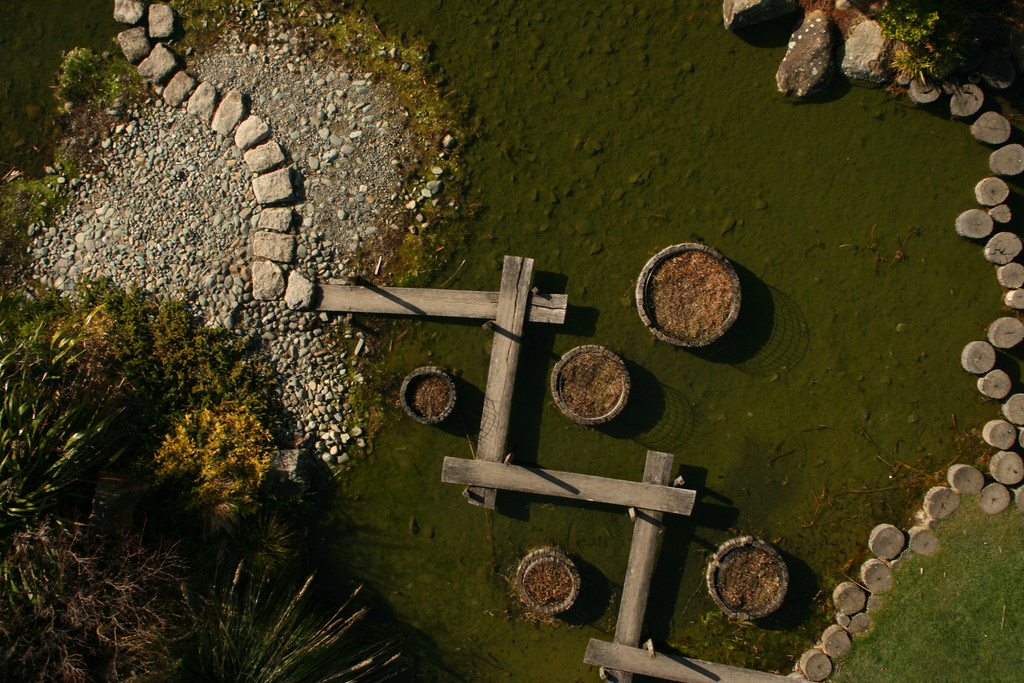
How to make a baisc stepping stone path
In order to create a walkway with stepping stones, you must first plan out the desired path and determine the placement of the stones. The area should be cleared of any debris or obstructions before digging holes for the stepping stones to sit in. The stones should be placed evenly apart and leveled so that they provide a stable surface for walking. Finally, the gaps between the stones can be filled with gravel or sand to complete the walkway. Or – if you want to get more creative – take inspiration from these images and set them in water, or dramtic ally to cross garden sized sandy deserts, ot connect up with other paths that make you slow down and take your time. (Which is really the point, amiright?)
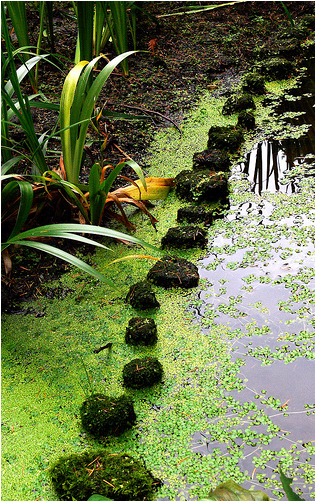
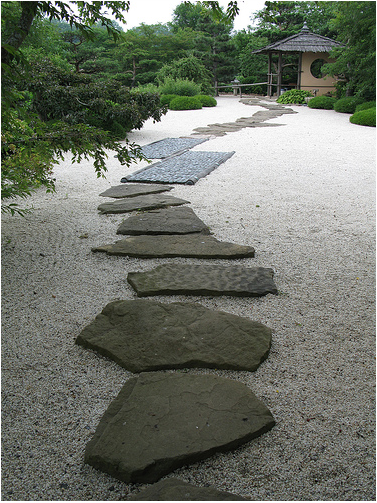
What makes a stepping stone path in your garden successful?
We have all experienced ones that are less than great – but perhaps never thought about why.
Stepping stone paths in gardens can be tricky and here is what I think makes them work.
1) The stepping-stones should be dramatically different from the surrounding materials.
Think stone and water, or stone and moss, or big stones and little stones. It also would work just as well if you had, say, purple stones and white stones or some other interesting contrast, but contrast is key.
2) Make sure the stones are comfortably walkable. Easy distances take away the anxiety about falling off.
Of course the anxiety is less if there is no water, but when faced with a stepping stone path, no matter how un-dangerous it is to step off (imagine surrounded by grass) – no one wants to miss a step or fall off the path.
So if you are designing a stepping stone path, make sure you consider the distance between the stones and aim to keep the excitement high but the fear low.
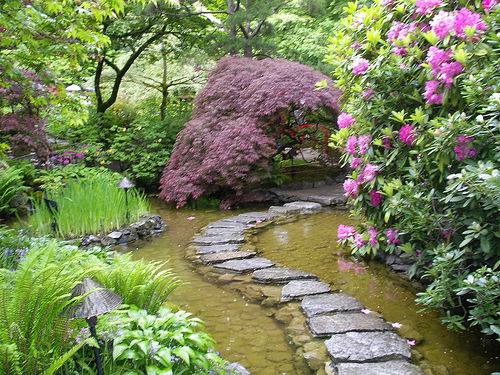
3) Make sure your stepping-stones are big enough.
Do you want room for one person or more? Make sure they are flat, step-able and big enough to stand on comfortably.
4) Consider mixing stepping stone material.
An example – A path that goes from stone to wooden mat and back to stone again adds interest. It provides a breather. Consider a variety of materials.


5) If your stepping stone path is long, create a spot to take a break.
You and your garden guests will appreciate the opportunity to pass others who are along the path, or to be able stop. A bigger stone, or a spot to step away can create a good break.
I love the stepping stone path, and when done well, it is so completely inspiring and inviting. Have you built one? Share the pictures if you have, and let us know the lessons you learned.
-Rochelle
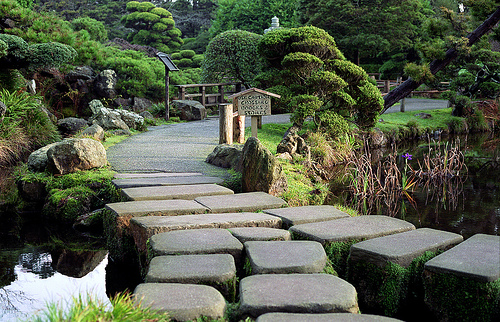
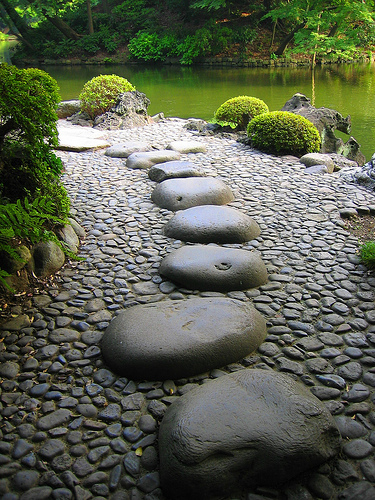

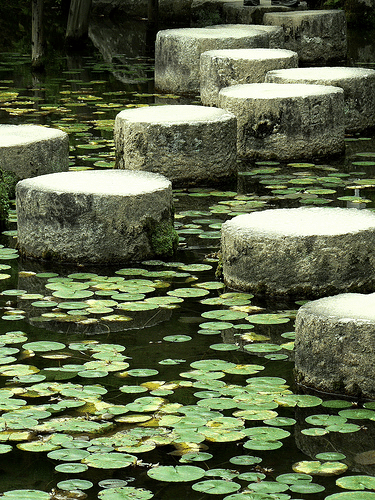
wonderful images, rochelle!
You may enjoy this link to tour the Katsura Imperial Palace put together for Buildings and Cities course at columbia University.
http://www.columbia.edu/itc/ealac/V3613/katsura/dmb50o07.htm
highlights several paths and other elegantly simple landscape features.
Also
http://www.landliving.com/image/jrose_path.jpg
this meandering stone path by james rose in a mid-20th century suburban nj lot that creates a sense of journey, passing among woodland raised beds (or is the path sunken??) and offering an opportunity to sit on a the stone bench and observe the scene.
then there is the very strict geometry of paths from Stephen Stimsons Sconset House project.
http://www.stephenstimson.com/flash/flash.html
nice mix of materials and rhythm that is established by the design.